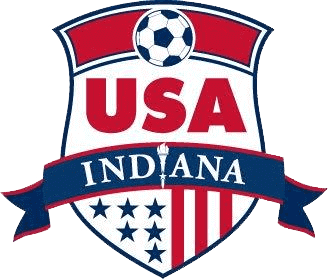John Harlin Geisse
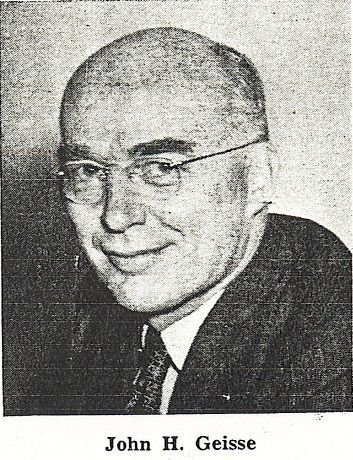
Aviation Pioneer
John Harlin Geisse was born July 17, 1892 in Fond du Lac, Wisconsin, the son of Charles Francis. and Jennie H. Geisse.
He received a B.S. degree in Mechanical Engineering from the University of Wisconsin in 1917.
He was elected to Pi Tau Sigma, the honorary mechanical engineering fraternity.
Prior to graduation, Geisse enlisted in the Army Signal Corps for flight training.
He was commissioned 2nd Lieutenant, Reserve Military Aviator, in 1918.
John H. Geisse was married to Esther Wattawa Geisse and had two children: John F. Geisse and Nancy Geisse Falls.
Esther Wattawa's mother's maiden name was Walsh.
Esther's uncle was U.S. Senator Thomas James Walsh, prosecutor in the Tea Pot Dome scandal.
John H. Geisse newspaper clippings
1935: Geisse pilots plane across the USA August 12
1935: Geisse pilots plane across the USA August 29
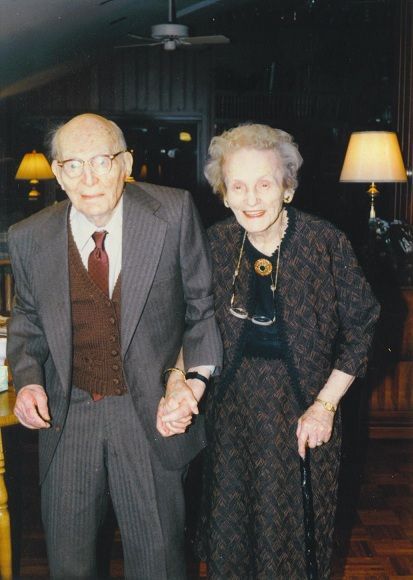
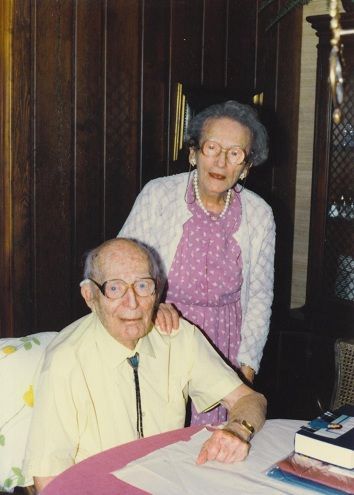
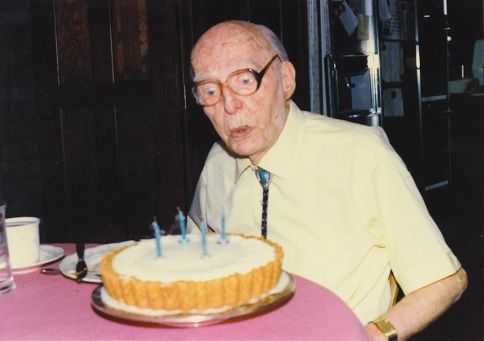
http://www.ecommcode2.com/hoover/research/historicalmaterials/other/geisse.htm
"The Papers of John H. Geisse contain correspondence, reports, drawings, descriptions,
blueprints, articles, speeches, patent data, and clippings and other printed materials
documenting his aviation activities.
With a Mechanical Engineering degree from the University of Wisconsin, Geisse
enlisted in the Signal Corps of the Army for flight training in 1917. He continued his active
life-time participation in aeronautical engineering at MIT; McCook Field, Dayton, Ohio;
Wright Aeronautical Corporation, Patterson, N.J.; Navy Aeronautical Engine Laboratory,
Philadelphia Navy Yard; and the Aeronautics Branch of the Department of Commerce.
Some of the donor's aviation interests documented in these files are the Comet engine with
a novel type of cooling system, the small airport construction program, a way of building
flight simulators, and the crosswind landing gears to eliminate the necessity for multiple
runways for wind coverage. This device saved the Federal Airport program millions of
dollars in construction costs. Geisse contributed extensively to the aviation press and
promoted general aviation through the development of the equipment used by it.
Biographical Sketch
John Harlin Geisse was born July 17, 1892 in Fond du Lac, Wisconsin, the son of
Charles F. and Jennie H. Geisse. He received a B.S. degree in Mechanical Engineering
from the University of Wisconsin in 1917. He was elected to Pi Tau Sigma, the honorary
mechanical engineering fraternity.
Prior to graduation, Geisse enlisted in the Army Signal Corps for flight training.
He was commissioned 2nd Lieutenant, Reserve Military Aviator, in 1918. In the same
year he was selected to attend a post graduate course in aeronautical engineering at
M.I.T. In 1919-20 he was assistant chief of the Power Plant Section, Engineering
Division, McCook Field, Dayton, Ohio.
In 1921-22 he was experimental engineer for the Wright Aeronautical
Corporation, Patterson, N.J. and in 1922-29 he was chief engineer of the Navy
Aeronautical Engine Laboratory, Philadelphia Navy Yard.
In 1929 Geisse initiated the formation of the Comet Engine Corporation,
Madison, Wisconsin by the Gisholt Machine Tool Company, Madison, and Air Investors,
New York, to carry out a Navy contract for the construction of an engine incorporating
a novel type of cooling system on which he held the patents. The prototype was built
and it passed the Navy acceptance tests but the company failed during the Depression.
In 1933 he joined the Aeronautics Branch of the Department of Commerce
where he initiated and organized a small airport construction program with the Civil
Aeronautics Administration. Many small airports for general aviation use were
constructed throughout the United States. He also wrote amendments to the Air
Commerce Act of 1926 and secured their passage by Congress. These authorized the
Branch to promote general aviation by aiding in the development of the equipment
used by it.
While chief of its new development section he wrote performance specifications
for an airplane which would be easier to fly than those then available and called for bids
on the construction of a prototype. Against both internal and external opposition,
including charges that he was trying to force the industry back twenty five years, he
awarded the contract for an airplane with a tricycle type undercarriage, type which had
been abandoned many years earlier in favor of the tail wheel type. Tests made in the
Civil Pilot Training (CPT) Program with airplanes meeting this specification revealed
that the time required to learn to fly them was substantially less than that required for
the other CPT plane and the time required for a pilot certificate limited to flying this
type was reduced from 35 to 25 hours.
The winning plane was based at the Army's Bolling Field and its performance
there so impressed the Chief of the Army Air Force, General Arnold, that he had a
tricycle gear put on an airplane then on order. Thereafter practically all Air Force
procurement was shifted to the tricycle gear. It was then adopted by the Navy and
airlines and later by general aviation.
While acting as a CAA consultant to a National Research Council on the
selection and training of pilots, Geisse became convinced that the military abandonment
of flight simulators for use in basic flight training was due to the inability of these
simulators to simulate the kinesthetic cues. At the time the consensus was that pilots
should be taught to ignore rather than use these cues in instrument flying. Authorities
in this field now recognize that this was a mistake.
Geisse then invented a patented way of building simulators capable of providing
the proper kinesthetic cues and had a prototype built. Designated representatives of
both military air services inspected the unit and recommended it to their services.
However, it was considered to be too late for World War II training.
Later, when Assistant to the Administrator for General Aviation Development,
and the Federal Airport Program was about to be started, Geisse initiated and
directed an investigation of crosswind landing gears to determine whether or not
their use could eliminate the need of building "windrows" type airports having
multiple runways for wind coverage. Gears were developed for five airplanes ranging
from a small trainer to an airline transport. All were successful and it was clearly
demonstrated that multiple runways were unnecessary. A cost analysis was made that
showed that all of the airplanes then in service could be modified for crosswind
operations at a fraction of the cost of providing crosswind runways. The Administrator
then adopted policy that no more federal funds would be made available for the
construction of runways needed for wind coverage only. This saved many millions
of dollars in the Federal Airport Program.
In 1950 Geisse was awarded the Department of Commerce Gold Medal for
"outstanding contribution to the public service and the nation".
After leaving government service he continued to work on crosswind landing
gears and invented and patented an entirely new type which was much simpler, less
costly and lighter than any then available. Competitive tests by the Navy also showed
that it provided a superior performance. The new type was manufactured under license
by the Beech and Cessna airplane companies for both civil and military use.
Geisse contributed extensively to the aviation press. He wrote the aviation
engine section of the Encyclopedia Britannica, was consulting editor for Esquire's
"Plane Talk" and co-author of Technology, of the Department of Commerce
"Post War Outlook for Private Flying".
He was a member of the Army-Navy Club, the Aero Club of Washington, the
Wings Club of New York, the National Aeronautics Association, the Institute of the
Aeronautical Sciences, and the Society of Automotive Engineers. He served one term
each as chairman of the Washington sections of the latter two."
The family of John Harlin Geisse donated his private papers to the Hoover Institute. Contents as listed here:
http://www.ecommcode2.com/hoover/research/historicalmaterials/other/geisse.htm
"Box Contents
1
Aero Club, 1948
"Aircraft Design as Related to Airport Standards" by Milton W. Arnold,
1950
Airport Development, articles, 1944-54
Atlas Corporation, 1940-47
Aviation Bill, 1934-38
Aviation Publishing Corporation, 1928-39
B, General, 1945-48
Beech Aircraft Corporation, 1956-57
Blueprints, n/d
Briggs Manufacturing Company, 1938-40
Buffalo Gasolene Motor Company, 1927-28
CAA/Federal Aviation Agency, 1944-62
Cessna, 140-170-190, 1953-70
Champion Aircraft Corporation, 1958-60
Comet Engine Corporation
Articles, 1929
Correspondence, 1929-37
Formation, 1928-29
Navy Department, Bureau of Aeronautics Report, 1932
Commerce Department
Correspondence, 1937-45
Endorsements, Assistant Secretary, 1932-33
A - I
J - W
Gold Medal Award, 1950
See Also: Oversize Box
Consolidated--Convair, 1950-59
Corporation Trust Company, 1951-78
Cross Wind Landing Gears
Army Negotiations, 1957
Articles, 1950-59
2
Boeing 707's Undercarriage, n/d
Companies Interested (AOPA), 1951-54
Marine Corp Evaluation, 1956
Navy SNJ Adapter, 1953
Reports, 1948-81
D, General, 1940-55
Delta Engine
Correspondence, 1937-45
A - G
H - W
Calculations, n/d
Drawings and Descriptions, 1939, n/d
Report, n/d
Desloge-Robertson Agreements, 1952-56
Development of Low-Cost Planes, 1935-64
Doolittle, James H., 1952-56
Douglas Aircraft Company, 1947-60
E, General, 1950-78
Economics
Articles, n/d
Correspondence, 1976-83
Ercoupe, 1952
3
Esquire
Correspondence, 1944-46
Plane Talk, 1946
F, General, 1928-82
Flight Simulators
Correspondence, 1953-73
Reports, 1968-69
"Flivver" Planes, 1934-45
Flying, 1952-82
G, General, 1944-54
Geisse Gears, Inc.
Advertisements, n/d
Assignment & Sale, 1952
Corporate Records, 1952-77
Photos, n/d
Geisse, John F. and Nancy, 1954-70, n/d
Geisse, John H.
Articles & Speeches
1929-31
1933-34
1935
1936
1937-40
1944
4
1945-49
1950-64
n/d
Autobiography, n/d
Biographical File, 1928-88
Personal, 1934-77
Geisse, Harold L., 1939-51
Ground Training Machines
Commerce Department, 1942-51
Justice Department, 1930-43
Lane Company, 1942-43
H, General, 1932-82
Hammond, Dean, 1947-68
Institute of Aeronautical Sciences, 1949-50
Invitations, 1936, n/d
J, General, 1980
K, General, 1938-83
Klemin, A., 1928-46
Kollsman Instrument Division, 1944-48
L, General, 1933-43
Lockheed Aircraft Corporation, 1939-60
Mc, General, 1937-81
McCarran, Pat, 1946-50
M, General, 1947-75
Martin, Glenn L. Co., 1944-50
Morey Airplane Co., 1951-54
N, General, 1947-77
National Airplane Rental Service, "Fly Yourself"
Clippings, 1945-46
Correspondence, 1946-47
Proposal, 1946-47
5
Reports, n/d (2 files)
Traffic Estimate, 1947-48
Navy Department
Bureau of Aeronautics
1923-32
1951-57
Judge Advocate General, 1929-31
Personnel Papers, 1951-52
New Years Cards, n/d
Nilakantan, P., 1950
P, General, 1948-82
Patents
Canada, 1950-52
France, 1950-58
Great Britain, 1948-52
United States
1931-49
1950-60
Patents Data, 1948-57
6
Patents Specifications, 1931-60
Photos, n/d
Post War Plans, 1942-45
Private Flying, 1934-45, n/d
Proxmire, William, 1976-81
R, General, 1940-82
Regulations, 1940-46
Roadable Airplane and Flying Automobile
Correspondence, 1944-48
Photos, n/d
Roosevelt, Franklin D., 1933
Roosevelt, G. Hall, 1934-40
S, General, 1946-60
Saturday Evening Post, 1938-50
Schildhauer, C.H., 1950-51
Scott Aviation Corporation, 1948
Senate Hearing, 1954
Skyways, 1954-59
Society of Automotive Engineers, certificate, 1944
See: Oversize Box
Solomon, S.J., 1950-57
Spartan School of Aeronautics, 1943-45
Stanford University, 1940-44
Stearman-Hammond Aircraft
Correspondence, 1936-40
Photos, n/d
See Also: Oversize Box
T, General, 1943-55
Taylorcraft Corporation, 1941-50
Traffic Control, 1942
Van Dusen Aircraft Supplies, 1950-61
Vidal, Eugene L., 1933-69
W, General, 1944-82
Walker, Robert H., 1946
Walsh, Tom J., 1932-33, n/d
Williams, Samuel C., 1943-56
Wilson, Gill Rob, 1935-44
Wings, Inc., 1958-60
7 (Oversize Box)
Airplane Over Washington, D.C., aerial photo, n/d
Beechcraft 25th Anniversary, booklet, 1957
Society of Automotive Engineers, certificate, 1944
Stearman-Hammond Aircraft, photo, n/d
U.S. Department of Commerce Award, 1950"
